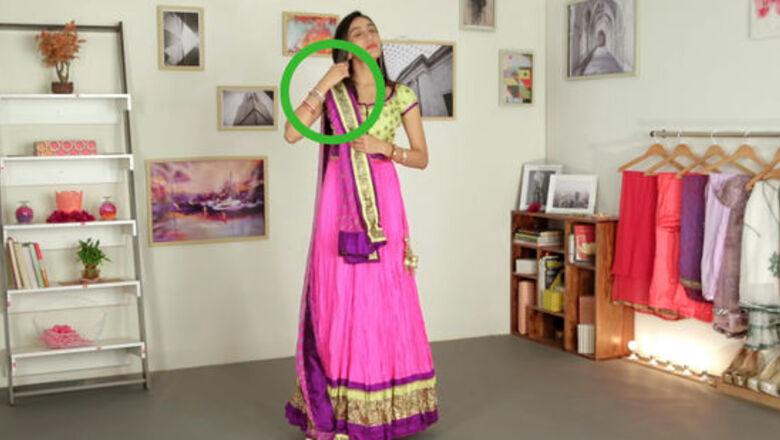
views
Creating a Tummy Flattering V-Shape
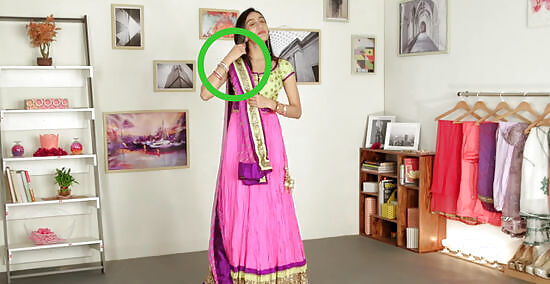
Make narrow pleats in your lehenga dupatta. Fold your dupatta lengthwise to create narrow pleats. Then, position and pin your dupatta onto your right shoulder. Lay your pleated lehenga dupatta over your right shoulder so that most of the excess material hangs down in back. The material in front should hang down to your hip. As you pin the pleated material to your right shoulder, make sure that the pin is not visible. Insert the pin from under your shoulder sleeve.
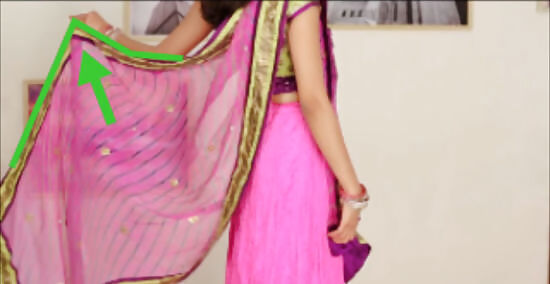
Tuck in the end of your lehenga dupatta. Take the longest end of your lehenga dupatta and bring it to the front. Fold the corner to create a pleat and then tuck it into the front of your skirt, just below your belly button. Make sure that you tuck in enough fabric to hold the dupatta in place. A few inches should do.
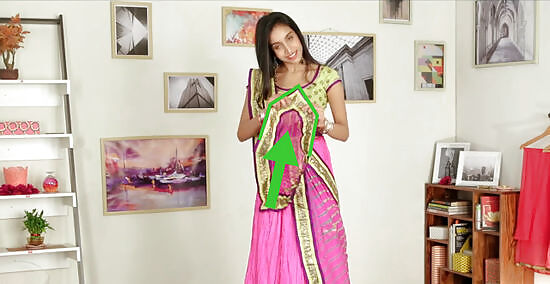
Pin the other end to your other shoulder. Pick up the corner of the short end of your dupatta that is hanging down in front of you. Fold the corner to create a pleat and then pin that corner to your left shoulder.
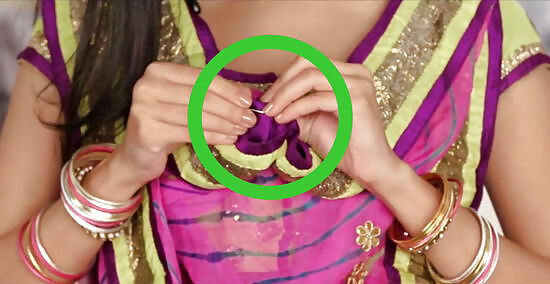
Secure the center. The material hanging down in front should look like a letter “U,” but you want to pleat the center and pin it to create a “V” shape. Take the top center part of the material and pleat it. Then, pin the pleated material to the center of your top.
Creating a Left Side U-Shape
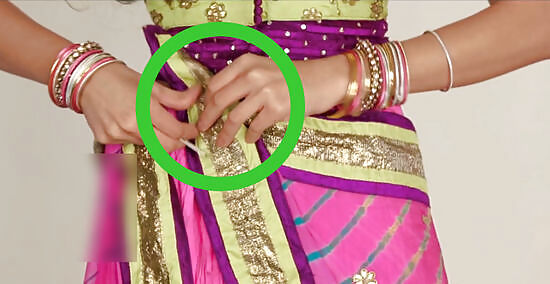
Tuck one end of your dupatta into your waistband. Wrap your lehenga dupatta around your waist once and then tuck the upper corner into your waistband. You should tuck it in at the center of your waistband, just below your belly button.
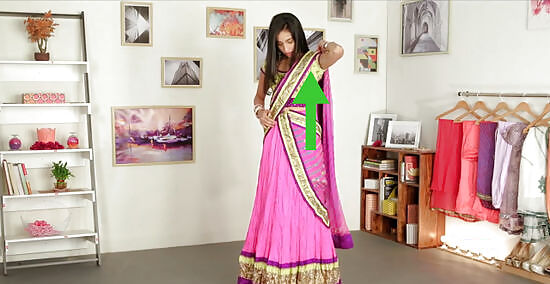
Drape the other end of the fabric. Create narrow pleats on the other end of your dupatta and wrap it across the front of your body. Then, lay the pleated fabric over your left shoulder. Position the fabric so that it is snug against the front of your body and pin the fabric in place. Make sure that the pins are not visible. Position the pins under the shoulder of your top.

Tuck the loose corner into your waistband. Take the end of the fabric that is hanging down in back. Pleat the corner and then tuck it into the center of your waistband, right over where you tucked the other end of your dupatta.
Creating a Beautiful Back Drape
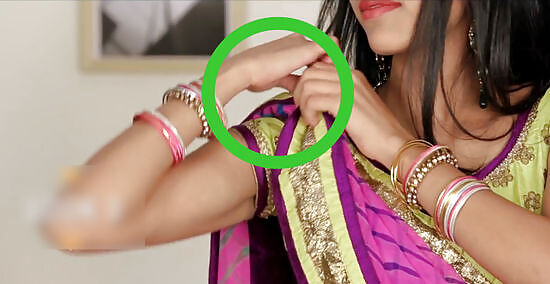
Pleat your dupatta and pin to your right shoulder. Create narrow pleats in your dupatta to begin. Then, drape the pleated fabric over your right shoulder and pin it in place. Make sure that most of the fabric is hanging down in back, but allow the fabric in front to hang down to the middle of your calves.
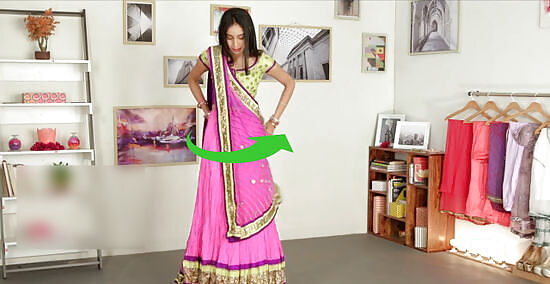
Tuck one of the front corners into the back. Take of the corners of your dupatta from the front and bring it towards the left hip and around your waist. Tuck this corner into the back of your waistband on the right side.
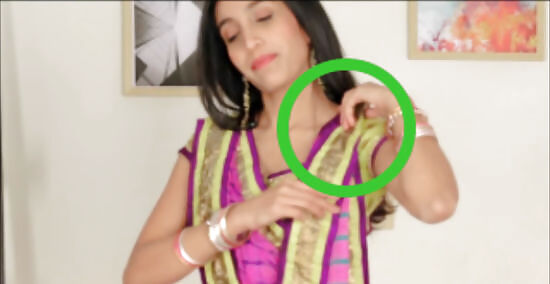
Pin one of the back corners to your left shoulder. Take the piece of your dupatta that is hanging down in back and bring it around your left hip and to the front. Then, pleat one of the corners and pin this corner to your left shoulder. Make sure that the pin is not visible.
Creating a Waistband and Long Front Drape

Pleat the dupatta and pin it to your left shoulder. The fabric in the front should hang down to your ankles. You will not need to do anything else with the front piece. It will just hang gracefully down the front of your lehenga. Having a long, dupatta piece can help to define your waist, so this may be a flattering look if you carry more weight around your waist.

Wrap the back piece around your waist. Bring one corner of the back piece of your dupatta to the front and then wrap it around your waist. Bring this piece all the way around to the back again and then, tuck it into the back center of your skirt.
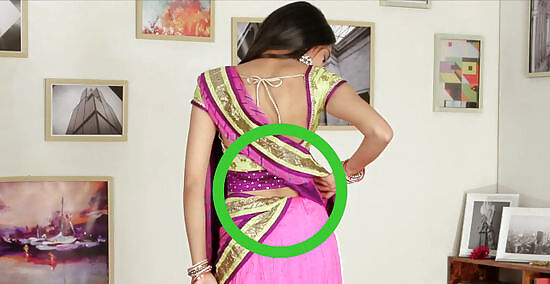
Tuck loose portions into your waistband. Go around the waistband and tuck the loose portions of the piece your wrapped around your waist to secure them. This will help to accentuate your waist and keep the dupatta secure.
Creating a Cocktail Look
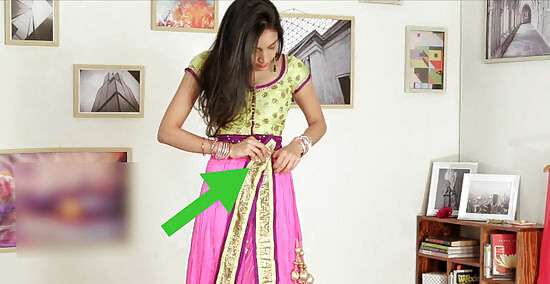
Tuck one corner into the front of your waistband. Pleat the corner of your dupatta first and then bring the corner over from the right side. Tuck the corner into the center of your skirt, just below your belly button.
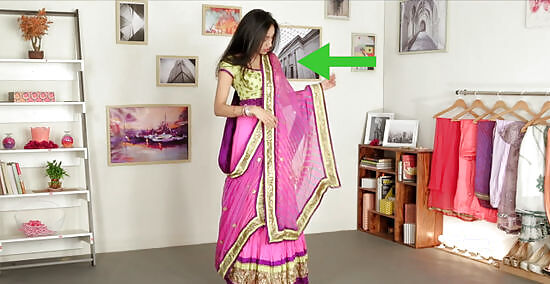
Drape the dupatta loosely over your left shoulder. Do not pleat the fabric before you drape it. Allow it to be fully open and flowing over your arm. Do not pull too hard on the fabric either or it may come loose from your waistband.
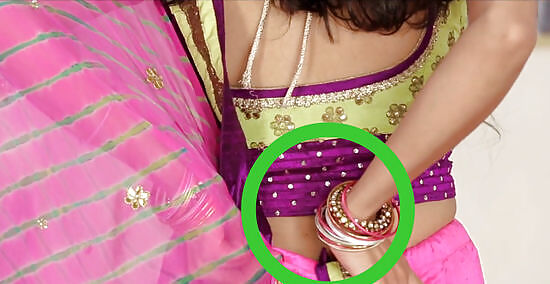
Pleat the other corner of your dupatta and tuck it in. Pleat the other corner of your dupatta, but allow the rest of the fabric to stay loose and flowing. Then, bring this corner of the dupatta around your waist and tuck it into the center of your waistband in the back of your skirt. Some loose, flowing fabric can help to add curves to straight shapes. If you have narrow hips and a small bust, then this may be a good look for you.
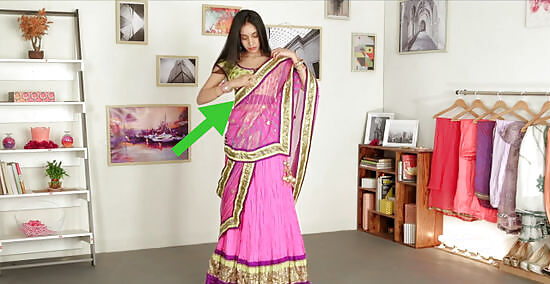
Adjust the drape and pin at the shoulder. You may tug at the fabric in front to bring it closer to your body or loosen it to make it flow more. When you are happy with the drape, pin one edge of the dupatta to your shoulder so that it will stay in place.
Creating a Bollywood Look
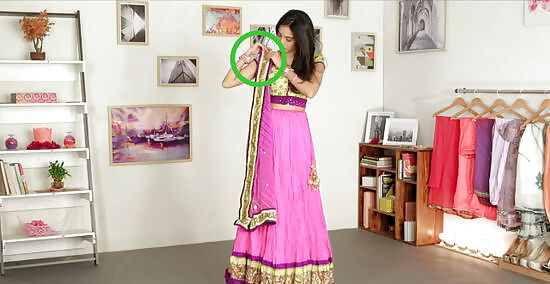
Pleat your dupatta and pin it to your right shoulder. Fold your dupatta to create narrow pleats and then drape the pleated fabric over your right shoulder. Pin the dupatta to your right shoulder. Make sure that the fabric that is hanging down in front reaches just below your knees.
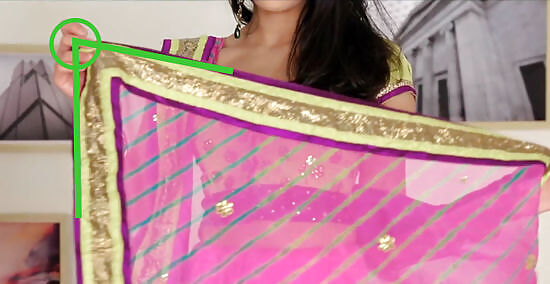
Bring the other end around to the front. Reach back and grab the back section of your dupatta with your left hand. Grab one corner of the dupatta and wrap it around your left hip. Bring the fabric in front of you, but allow most of it to hang down at your side.
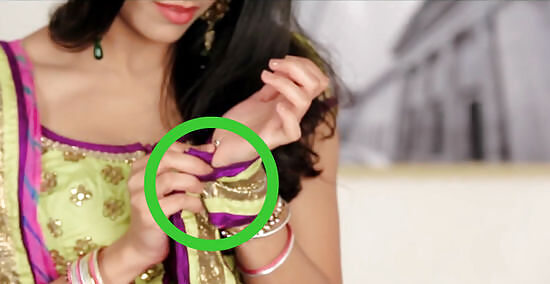
Wrap and pin the corner around your wrist. Fold the corner of the fabric once to pleat it. Then, wrap this corner around your left wrist once and pin it in place. Make sure that the pin is not visible.




















Comments
0 comment